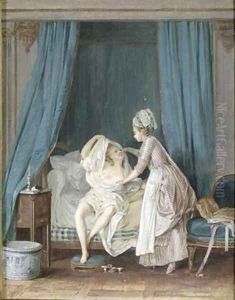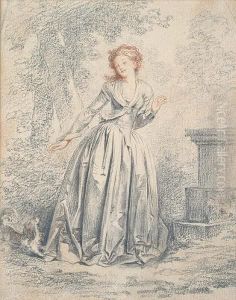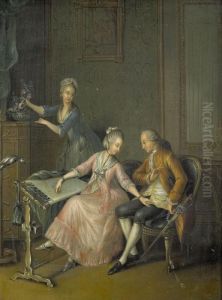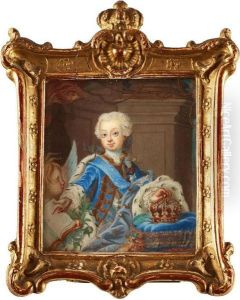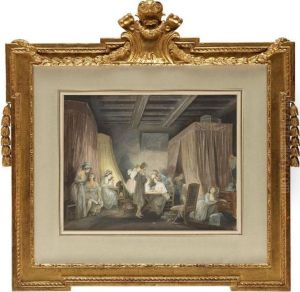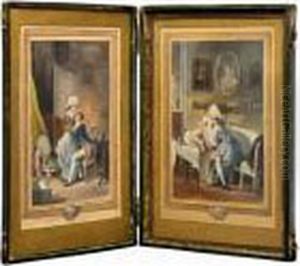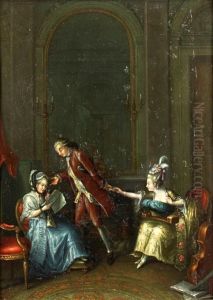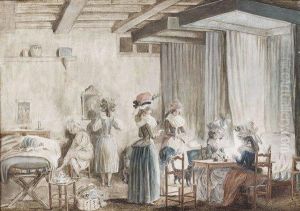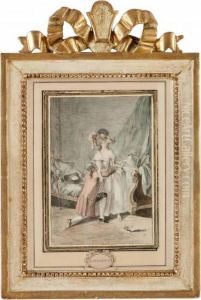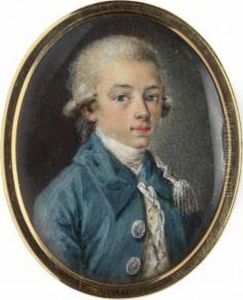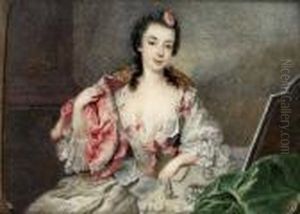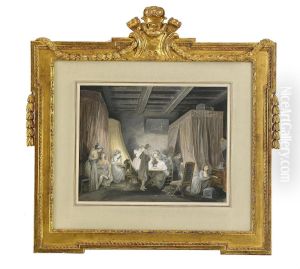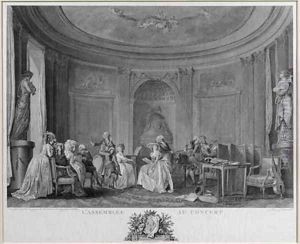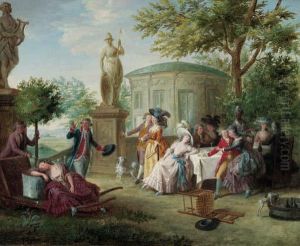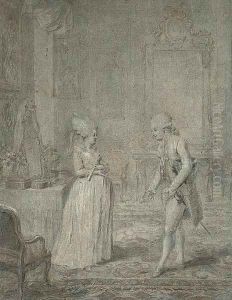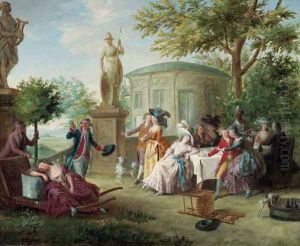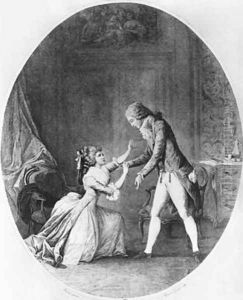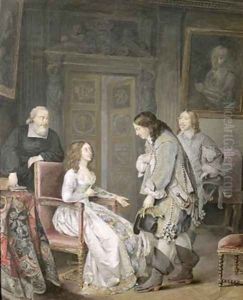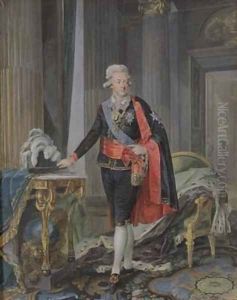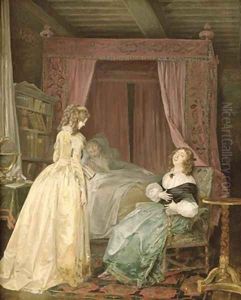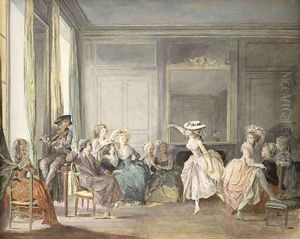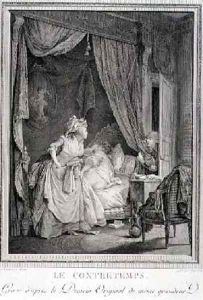Niclas II Lafrensen Paintings
Niclas Lafrensen (also known as Nicolas Lavreince and Niclas Lafrensen the Younger), born on October 4, 1737, in Stockholm, was a Swedish miniaturist and painter. Lafrensen hailed from a family with artistic roots; his father, Niclas Lafrensen the Elder, was also a painter. Despite his Swedish origin, Lafrensen is more closely associated with French art, as he spent a significant portion of his career in France.
Lafrensen initially trained under his father and then continued his education in Paris, where he became influenced by the French Rococo style, which was characterized by lightness, grace, and an emphasis on decorative elegance. He worked primarily as a miniaturist, creating small, exquisitely detailed portraits, often encased in lockets or similar pieces of jewelry. These miniature portraits were particularly fashionable among the French aristocracy of the time.
In 1764, he was accepted into the Académie de Saint-Luc, an association of artists in France. His acceptance marked the beginning of his professional recognition in the French art world. Lafrensen's work often involved genre scenes that portrayed the leisurely amusements of the French elite, including themes of love and gallantry. He captured the spirit of the ancien régime – the social and political system in France before the French Revolution – with a delicate and refined aesthetic.
During the 1780s, his career reached its zenith, with his paintings being sought after by a wealthy clientele. Lafrensen's success, however, was somewhat eclipsed by the onset of the French Revolution in 1789, which led to a decline in the demand for the ornate and aristocratic art that he produced. Despite this, he continued to work and adapt to the changing times.
Niclas Lafrensen's legacy is one of elegance and refinement. His works provide a window into the world of the French aristocracy in the years leading up to the Revolution. He died on December 6, 1807, in Paris, leaving behind a body of work that continues to be appreciated for its historical value and artistic beauty.
